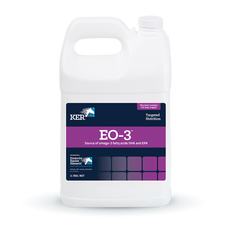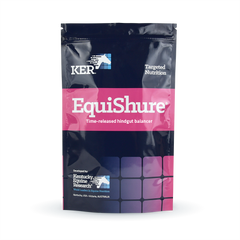Pituitary Pars Intermedia Dysfunction

(EQUINE CUSHING'S DISEASE)
Pituitary pars intermedia dysfunction (PPID), a problem seen most often in older horses, is caused by tissue overgrowth in the pituitary gland. It is also known as equine Cushing's disease (ECD). Horses with PPID have high levels of adrenocorticotropic hormone (ACTH). The surplus ACTH spurs the adrenal glands to manufacture excessive cortisol, a hormone that, when off-kilter, can negatively impact numerous body systems.
The condition affects primarily middle-aged or geriatric horses, those in their late teens, twenties, or thirties, but horses as young as seven years old have been diagnosed.
Affected horses may show signs such as increased thirst and urination, loss of muscle mass, an increases susceptibility to infection, and a long hair coat that doesn’t shed normally (hypertrichosis). In addition, horses may experience changes in body weight.
These horses are at higher risk of developing laminitis and may develop cortisol-induced insulin insensitivity. PPID horses that are insulin insensitive require feeds with a low glycemic response (relatively mild increase in blood glucose and insulin following a meal). Fructan-rich pasture and grain meals may quickly lead to laminitis in horses with PPID, but these horses must still meet their requirement for basic nutrients.
Dietary and Management Considerations
Astute feeding management plays a prominent role in the treatment of PPID. Diets high in starch may increase the risk of laminitis in affected horses. Therefore, low-starch diets are typically recommended. When obesity is also a factor, low-caloric intake diets may also be required. This often poses a challenge for horse owners who are faced with providing required nutrients and limiting excess caloric intake.
Supplementation with DHA and EPA, two omega-3 fatty acids, as well as chromium has been implicated in the reversal of hyperinsulemia, or insulin resistance, in mature horses. Additionally, vitamin E and C supplementation may recharge the immune system. In particular, vitamin C levels are known to decline in aged horses, so supplementation may be helpful.
Because of the predisposition for sole abscesses and laminitis, strict attention must be paid to hoof care. All attempts to reduce the likelihood of laminitis, such as the use of a hindgut buffer and limited grazing, should be implemented.
PPID is not a death sentence. There are several management practices that can keep an affected horse in use and in good health for many years following diagnosis.
Which solution is right for your horse?
EO-3™ Concentrated direct source of DHA and EPA omega-3 fatty acids. EO-3 is a rich source of the long-chain omega-3 fatty acids DHA and EPA in a palatable liquid form. EO-3 can be fed to all classes of horses including foals, breeding stock, and performance horses to improve the critical ratio of omega-3 to omega-6 fatty acids in the diet.
EquiShure® Time-released hindgut balancer. EquiShure promotes normal digestive function by aiding in the maintenance of an optimal hindgut environment and is designed for horses suspected of suffering from or that are at risk of developing hindgut acidosis.
Gold Pellet® The ultimate vitamin, mineral and amino acid supplement for horses. Gold Pellet has been scientifically formulated to contain essential nutrient levels to meet requirements for work or growth, and is designed to complement a traditional diet of grains and roughage.
Nano-E® Liquid natural-source vitamin E with superior bioavailability. Nano-E is a revolutionary natural-source vitamin E supplement for horses. Liposome encapsulation and nanodispersion ensures rapid and superior bioavailability for all horses.
Learn More
- Equine Cushing’s Disease: Australian and North American Differences
- Equine Cushing's Disease: Back to Basics
- Signs of Cushing's Disease in Older Horses
- Diagnosing and Managing Equine Cushing's Disease
- Support Skin, Hooves in Horses with Cushing's
- Cushing's May Affect Digestion in Horses
- Cushing's and Age-Related Decline in Equine Reproductive Efficiency








